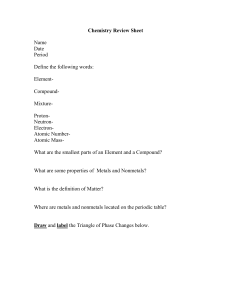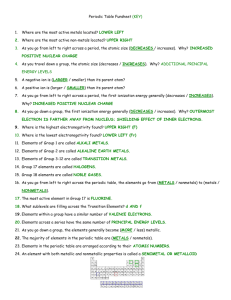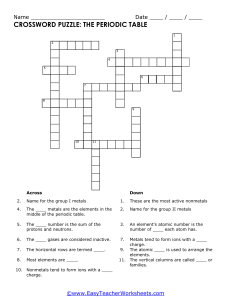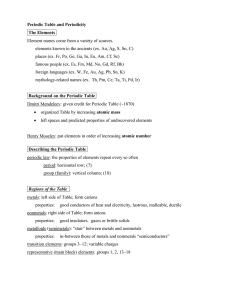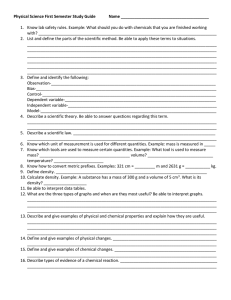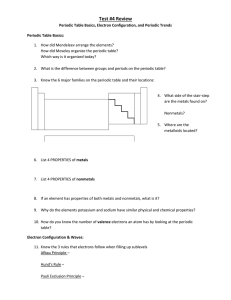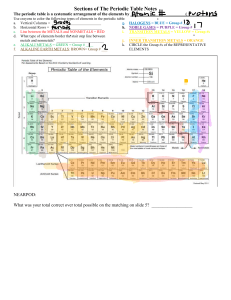Periodic Table Funsheet
advertisement
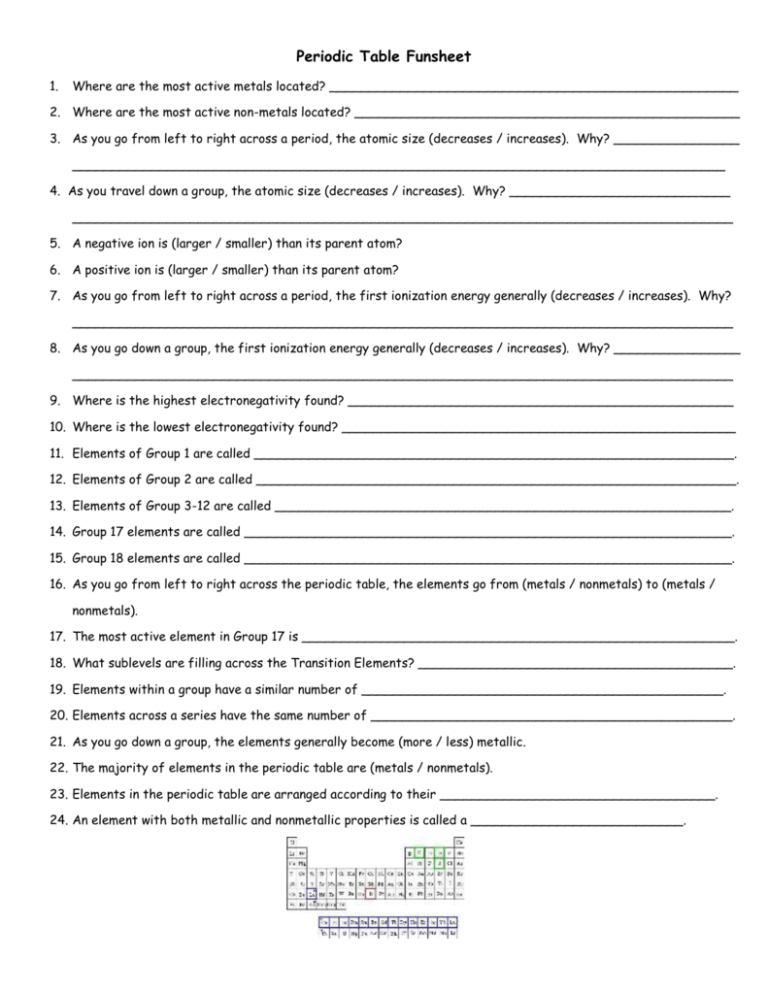
Periodic Table Funsheet 1. Where are the most active metals located? ____________________________________________________ 2. Where are the most active non-metals located? _________________________________________________ 3. As you go from left to right across a period, the atomic size (decreases / increases). Why? ________________ ___________________________________________________________________________________ 4. As you travel down a group, the atomic size (decreases / increases). Why? ____________________________ ____________________________________________________________________________________ 5. A negative ion is (larger / smaller) than its parent atom? 6. A positive ion is (larger / smaller) than its parent atom? 7. As you go from left to right across a period, the first ionization energy generally (decreases / increases). Why? ____________________________________________________________________________________ 8. As you go down a group, the first ionization energy generally (decreases / increases). Why? ________________ ____________________________________________________________________________________ 9. Where is the highest electronegativity found? _________________________________________________ 10. Where is the lowest electronegativity found? __________________________________________________ 11. Elements of Group 1 are called _____________________________________________________________. 12. Elements of Group 2 are called _____________________________________________________________. 13. Elements of Group 3-12 are called __________________________________________________________. 14. Group 17 elements are called ______________________________________________________________. 15. Group 18 elements are called ______________________________________________________________. 16. As you go from left to right across the periodic table, the elements go from (metals / nonmetals) to (metals / nonmetals). 17. The most active element in Group 17 is _______________________________________________________. 18. What sublevels are filling across the Transition Elements? ________________________________________. 19. Elements within a group have a similar number of ______________________________________________. 20. Elements across a series have the same number of ______________________________________________. 21. As you go down a group, the elements generally become (more / less) metallic. 22. The majority of elements in the periodic table are (metals / nonmetals). 23. Elements in the periodic table are arranged according to their ___________________________________. 24. An element with both metallic and nonmetallic properties is called a ___________________________.
